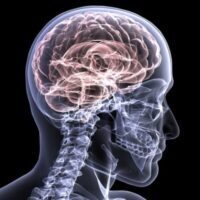Prospective study of the association between sport-related concussion and brain morphometry (3T-MRI) in collegiate athletes: study from the NCAA-DoD CARE Consortium
Bobholz SA, Brett BL, España LY, Huber DL, Mayer AR, Harezlak J, Broglio SP, McAllister T, McCrea MA, Meier TB, CARE Consortium Investigators. Br J Sports Med 2020 Sep 11;bjsports-2020-102002
https://bjsm.bmj.com/content/early/2020/09/11/bjsports-2020-102002.long
Take-Home Message
Collegiate athletes with a sports-related concussion may experience a shrinking of the amygdala after return to play while other healthy contact athletes experience an increase in amygdala size. It may be beneficial to learn if these changes are clinically meaningful.
Summary
Athletes that sustain a sport-related concussion may experience adverse outcomes later in life. There is conflicting evidence about whether a concussion can cause structural brain changes, which may contribute to poor outcomes. Further, much of the research regarding brain structural alterations focuses on the brain’s white matter (see posts below) instead of grey matter, which conducts processes and sends information to the body. Therefore, the NCAA-DOD CARE Consortium investigated the acute and early long-term association of sports-related concussion with white and grey matter structures in a cohort of 285 athletes. The cohort consisted of 99 athletes with a concussion, 91 healthy contact athletes, 95 healthy non-contact athletes. The authors matched the athletes according to institution, sport, sex, race/ethnicity, Wechsler Test of Adult Reading scores, years of participation, and starter status/athlete exposure (when available). Athletes completed up to 4 imaging sessions: 1) 24-48 hour after injury, 2) when signs/symptoms free, 3) 7 days after return to play, and 4) 6 months after injury. They measured the magnetic resonance images for cortical thickness and subcortical volumes of the amygdala, thalamus, hippocampus, and dorsal striatum.
On average, athletes with a sports-related concussion had symptoms for 9 days and returned to unrestricted play at 16 days after the injury. The only reported difference was that the contact control athletes had larger amygdala volumes at 6 months than the acute time points. However, on average, athletes with a sports-related concussion experienced a similar amount of change in the amygdala, but theirs got smaller from the time of return to play to 6 months.
Viewpoints
The authors found minimal associations of a single sports-related concussion with subcortical or cortical volumes and thickness within 6 months of injury. This research adds to the structural morphology research following a brain injury. The amygdala plays an important role in controlling emotions such as fear and anger. Therefore, changes in the volume of this region are concerning. This research can help understand if different therapeutic intervention and rehabilitation strategies may improve patient outcomes following a brain injury. It is important to note that the number of people with scans at each time point varied from 57 to 87. Hence, it is hard to decide if the differences overtime are real or simply related to getting scans on different people. Furthermore, there was no baseline (pre-injury) images, which enable an accurate measure of grey matter changes following a sports-related concussion. Additionally, it may be helpful to follow these athletes longer to monitor long-term changes. Despite these limitations, this was a challenging prospective study to perform that may provide food for thought. Medical professionals should use best practices to ensure proper and timely diagnosis and implement individual rehabilitation as needed for safe return to play.
Questions for Discussion
Do you think there are other areas of the brain that could be affected by a single sport-related concussion? Do you think measuring athletes with multiple concussions would have different results?
Written by: Jane McDevitt
Reviewed by: Jeffrey Driban
Related Posts
Structural Alterations Linger After Concussion Symptoms Resolve
Can Advanced Imaging Show Us Pathophysiology Following a Concussion?
Are Early Markers For Neurodegeneration In Sight using Multimodal Imaging
Diffuse Tensor Imaging of Sports-Related Concussion
Hard to Make Connections after a Concussion?….Blame it on the Default-Mode Network
Assessing Concussions with Functional MR Imaging


